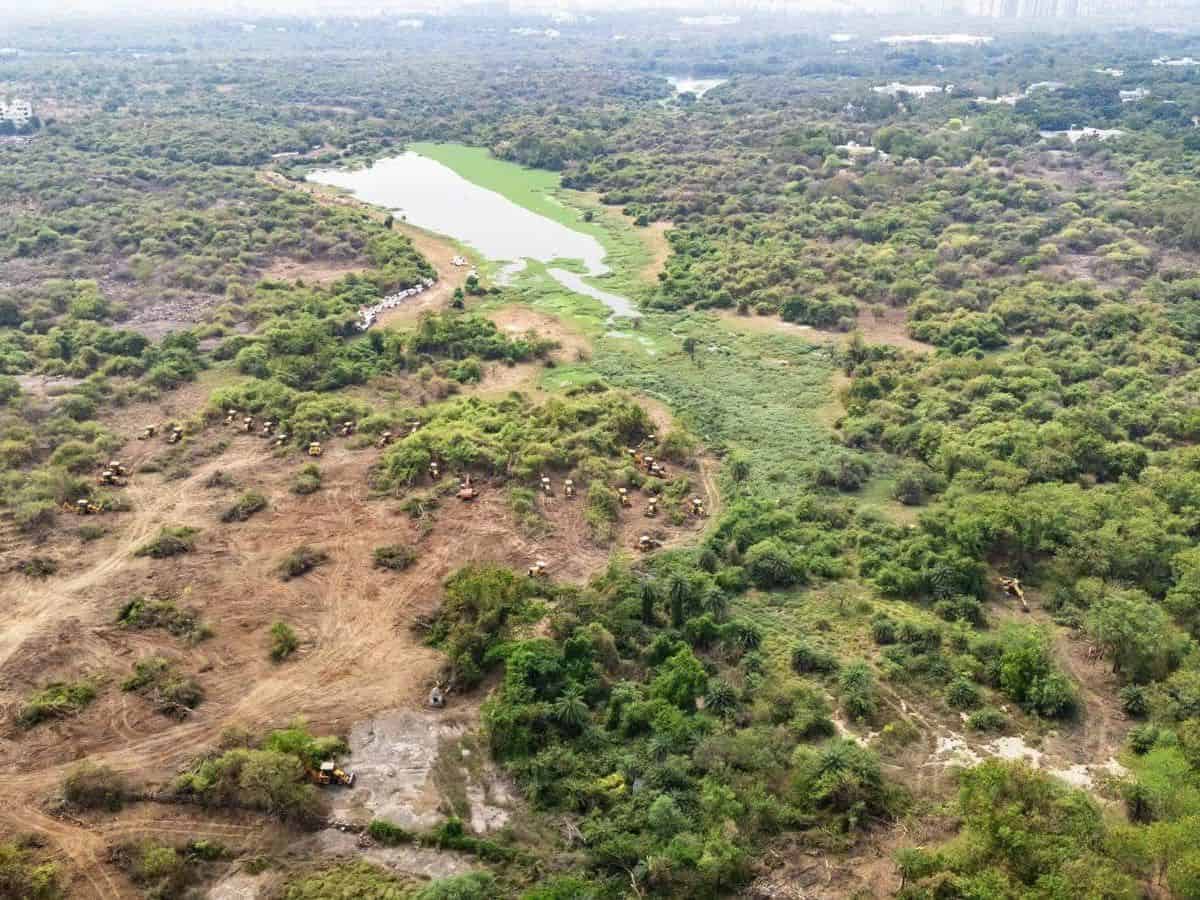
By Anjana Divakar
Somewhere between the sleek glass towers of Hyderabad’s IT corridor and the ever-expanding urban sprawl lies a vanishing piece of the city’s soul—its forests.
The clearing of nearly 400 acres near the University of Hyderabad (UoH) has caused more than outrage—it has revived an urgent question: What does development mean, and who defines it?
This stretch of land— though transferred to the government in 2004, it remained one of Hyderabad’s last wilderness corridors—home to native trees, birds, reptiles, and crucial groundwater recharge zones.
Despite a High Court stay, bulldozers moved in. Trees fell. Students and citizens watched in disbelief. Public pressure and legal scrutiny followed, leading to Supreme Court intervention and a site review by the High Court.
Now, in a surprising turn, the Telangana government has announced that the land—along with the university’s property—will be converted into a biodiversity park.
While that may sound like a course correction, it raises more questions than it answers.
A forest that already was
Why, many are asking, did this forest have to be touched at all?
It was already a functioning, natural biodiversity zone. Without the bulldozers, there’d have been no need for the term “Biodiversity Park” at all.
Incorporating UoH’s land into this project has raised concerns about institutional autonomy. Why must a university compensate for an avoidable policy failure?
For the students and faculty of the university, many of whom had long studied and protected this forest, the move feels less like a solution and more like erasure.
Development at whose cost?
This episode forces us to ask: Does our infrastructure-obsessed model of development bring real prosperity?
Clean air, access to water, stable temperatures, walkable cities—these are not luxuries. They are fundamental to the quality of life. And they depend directly on the ecological health of the city.
Tree loss increases heat. Concretising catchments worsens floods. Destroying ecosystems raises health risks. These are not abstractions—they affect millions.
So, when people protested the loss of this land, they weren’t just protesting tree loss. They were protesting a future where the city becomes less livable, less breathable, and less fair.
Need for systematic, transparent planning
What this incident highlights, more than anything else, is the absence of clear, data-driven, and ecologically responsible urban planning. Decisions on land use are being taken without up-to-date biodiversity mapping, comprehensive environmental impact assessments, and adequate public consultation.
Why is there no transparent register of ecologically sensitive areas within city limits? Why are urban forests and water bodies not listed and protected with the same seriousness as monuments or buildings?
If there were a publicly accessible, regularly updated biodiversity inventory of Hyderabad, it would be harder for such decisions to be taken in haste or under pressure.
Cities can and must grow thoughtfully. Singapore and Bogotá show how ecological planning can work. India must follow suit.
Role of the judiciary, civil vigilance
The courts stepping in brought temporary relief. But it shouldn’t have taken judicial intervention to prevent irreversible damage. Nor should citizens have to watch every corner of their city with anxiety, fearing what might vanish overnight.
What’s worse is the emotional toll, particularly on young people at UoH, who watched the forest they grew up in, learned from, and protected be reduced to broken stumps. This is not just an environmental loss. It is a betrayal of trust.
Between progress and preservation
Hyderabad faces a choice: overheat like other megacities or grow with ecological wisdom.
The answer may lie in acknowledging that prosperity isn’t just about industry—it’s also about habitability. The wealth of a city is measured in its tree cover, its water tables, its breathable air, and the hope its citizens feel.
The proposed biodiversity park may be a late concession, but it cannot be a distraction. True repair lies in revisiting the planning processes that allowed this to happen in the first place.
Anjana Divakar is the Executive Director at the Centre for Development Policy and Practice, Hyderabad. She writes on public policy issues such as environment, governance, education, and public life.

